Abstract
In a study of a cohort of 2498 men and 1032 women employed in the manufacture of mustard gas in Cheshire during the second world war 3354 (95%) individuals were successfully traced for mortality to the end of 1984. Large and highly significant excesses were observed as compared with national death rates for deaths from cancer of the larynx (11 deaths observed, 4.04 expected, p = 0.003), pharynx (15 observed, 2.73 expected, p less than 0.001), and all other buccal cavity and upper respiratory sites combined (lip, tongue, salivary gland, mouth, nose) (12 observed, 4.29 expected, p = 0.002). For lung cancer, a highly significant but more moderate excess was observed (200 observed, 138.39 expected, p less than 0.001). Significant excesses were also observed for deaths from acute and chronic non-malignant respiratory disease (131 observed, 91.87 expected and 185 observed, 116.31 expected, respectively). The risks for cancers of the pharynx and lung were significantly related to duration of employment. None of these results is substantially altered when expected numbers are calculated from Cheshire urban areas rather than national rates, although the relative risks for lung cancer and non-malignant respiratory disease are substantially reduced if rates for Merseyside, the nearest large conurbation, are used. The results provide strong evidence that exposure to mustard gas can cause cancers of the upper respiratory tract and some evidence that it can cause lung cancer and non-malignant respiratory disease.(ABSTRACT TRUNCATED AT 250 WORDS)
Full text
PDF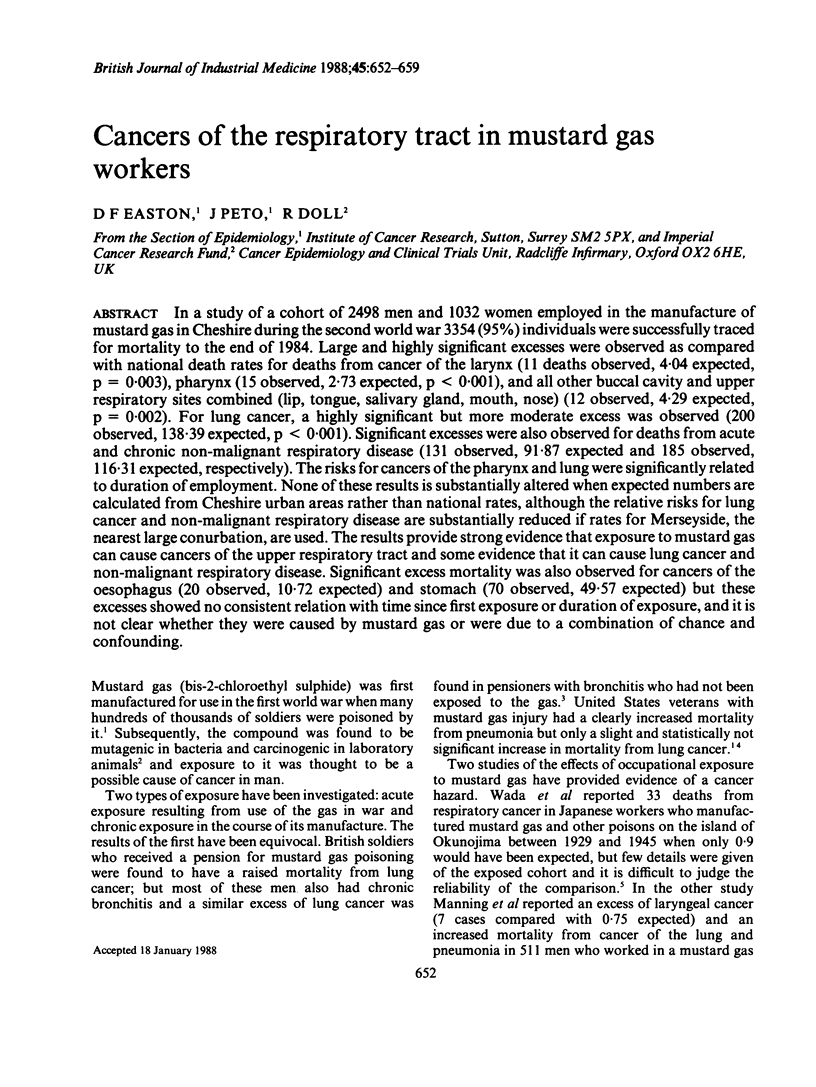
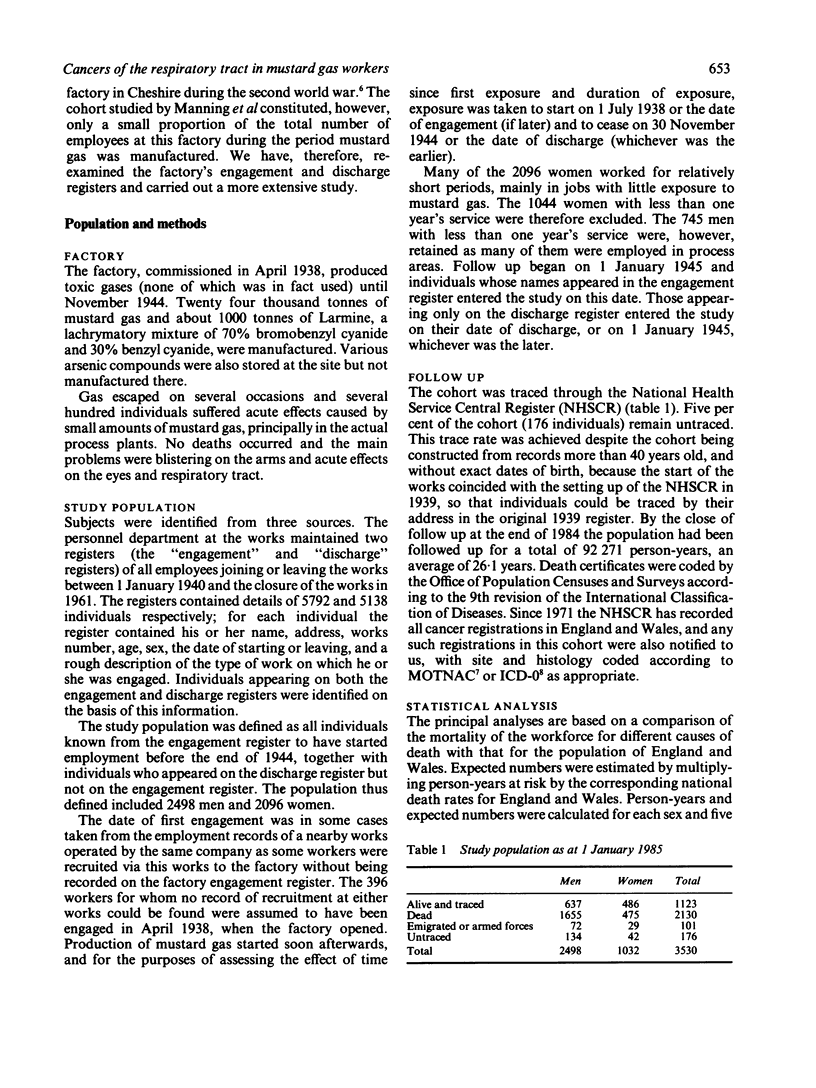
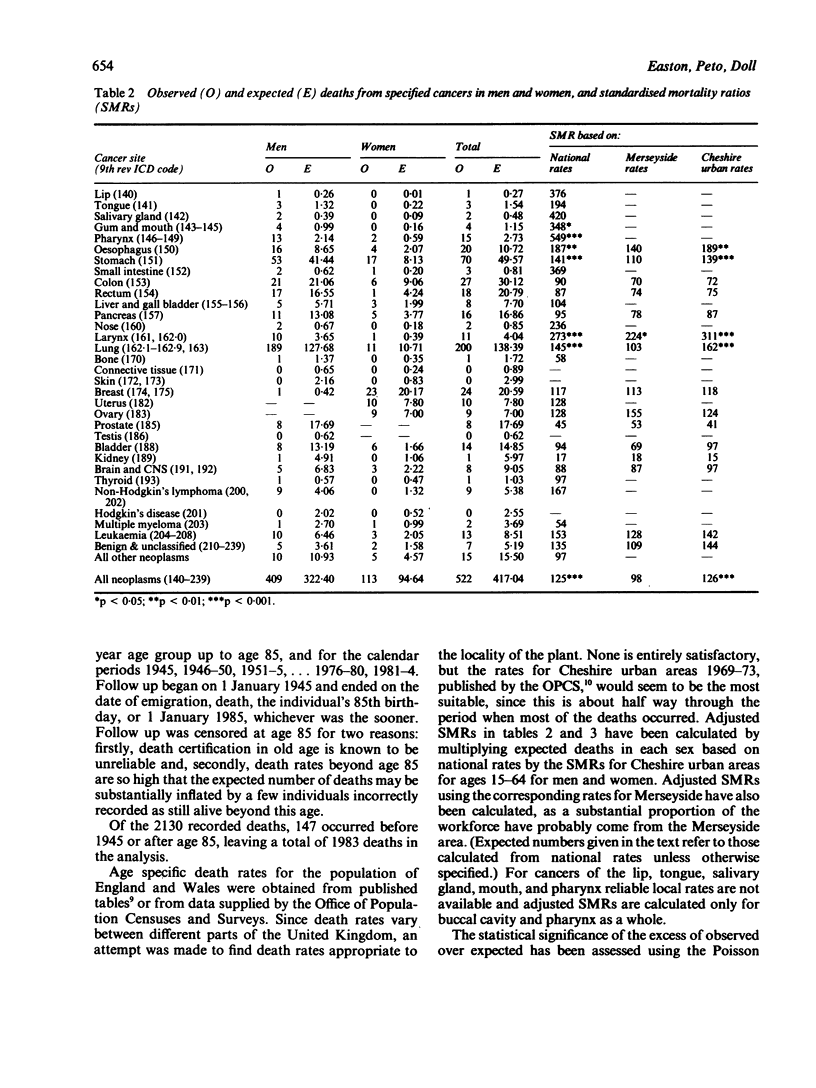
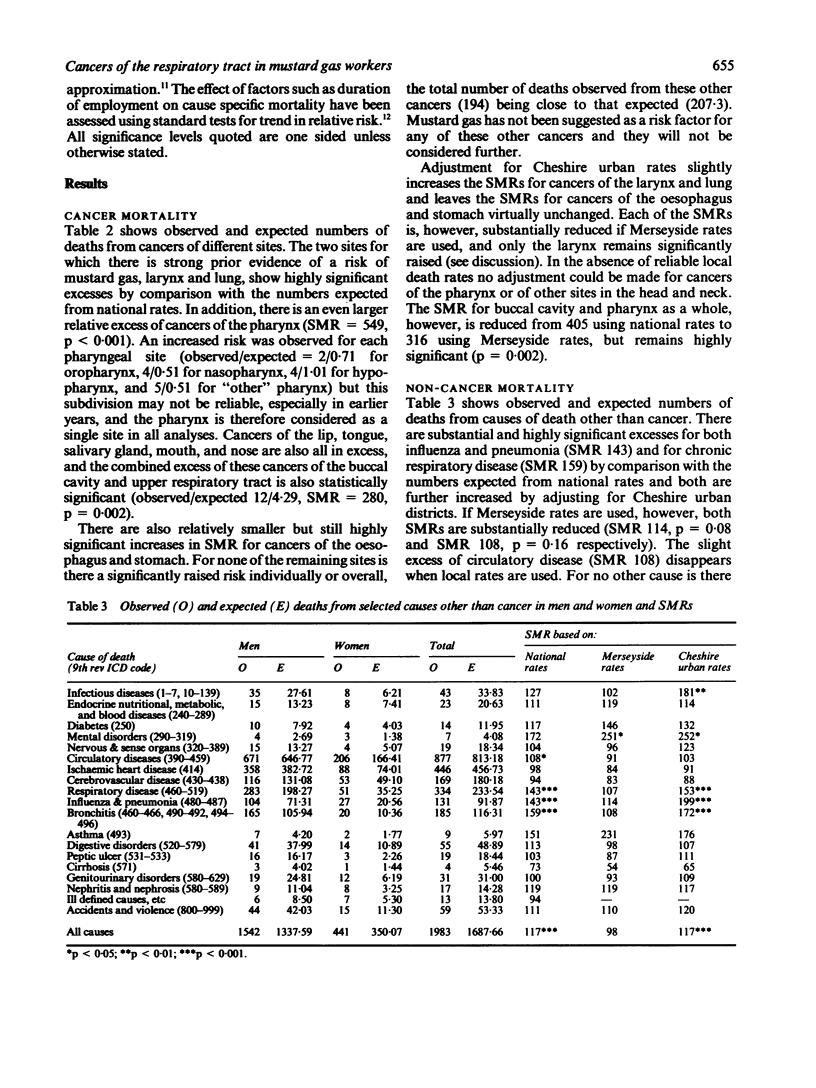
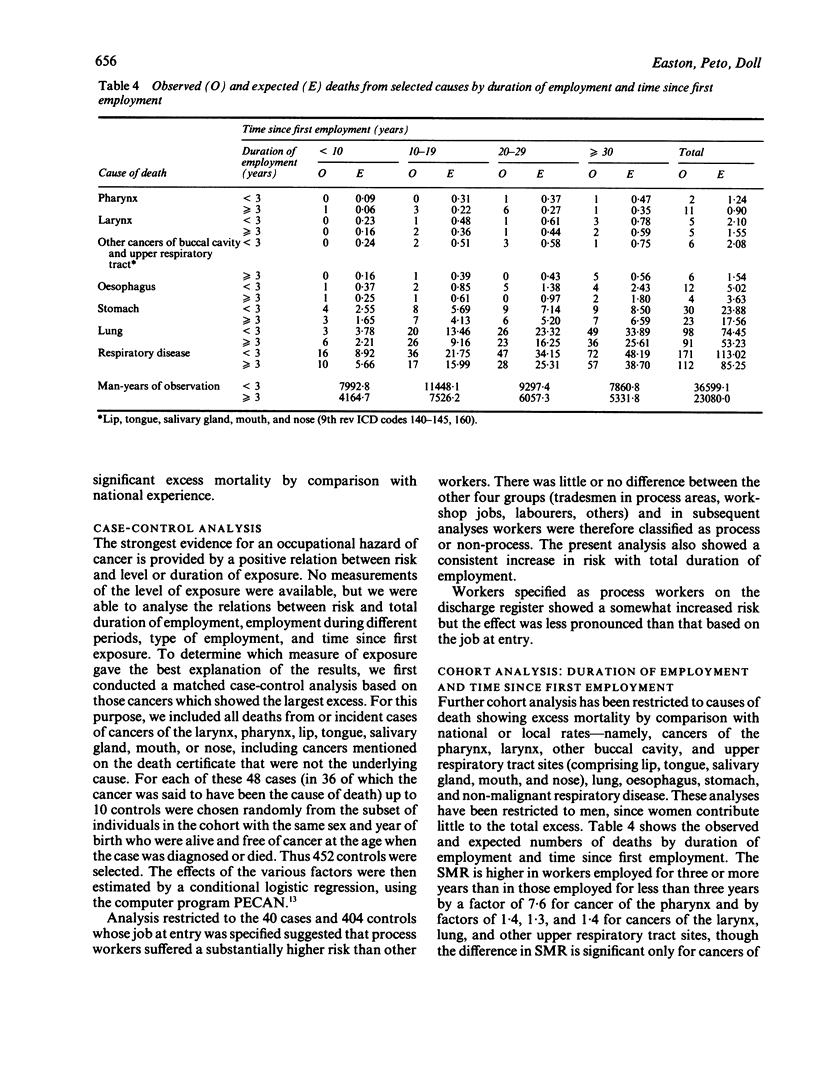
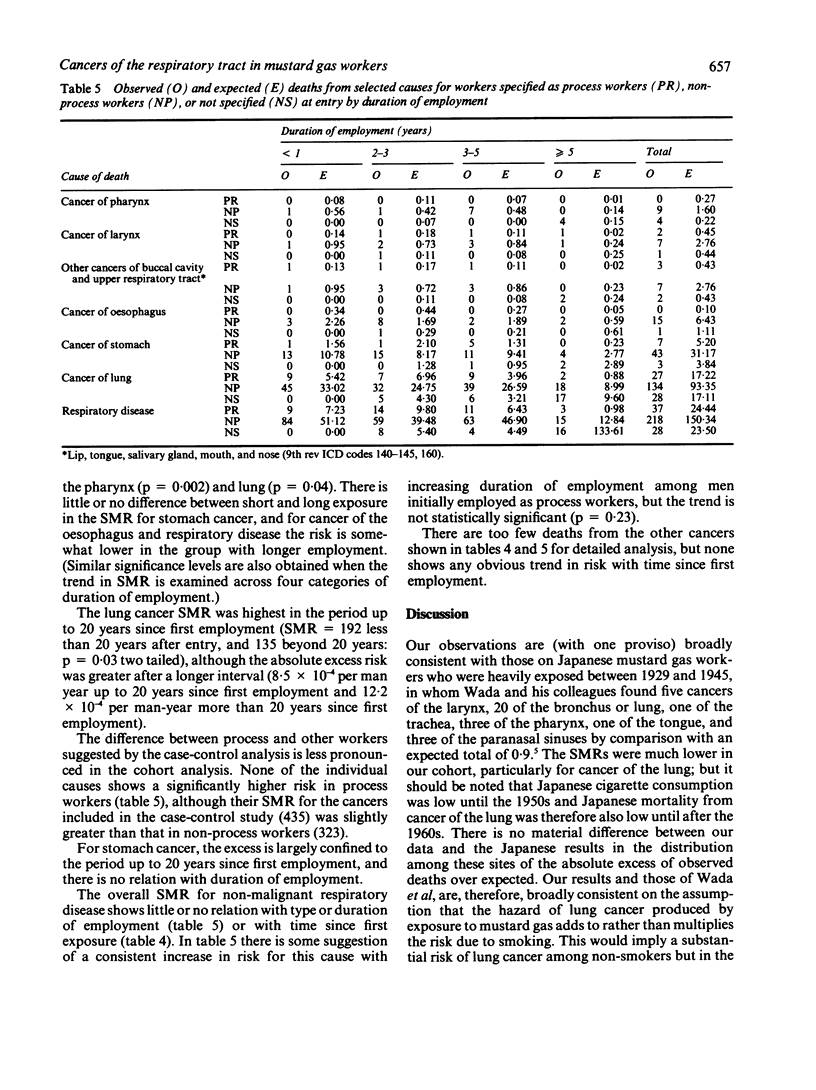
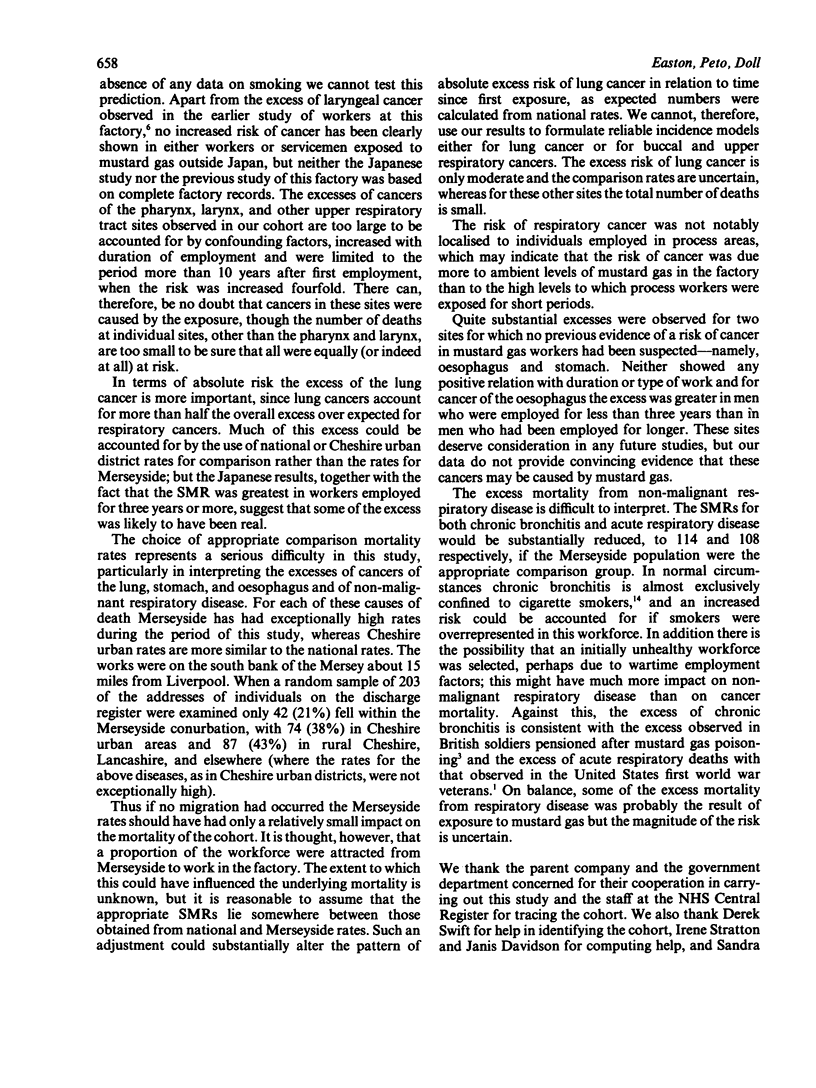
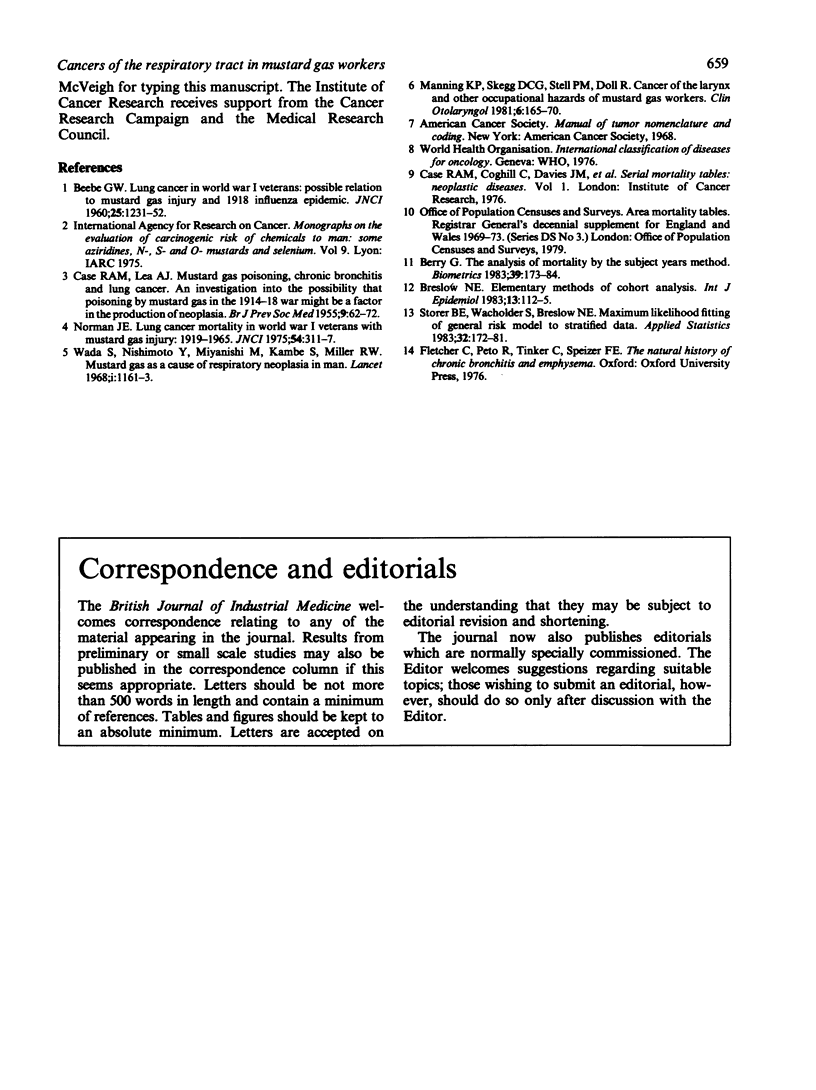
Selected References
These references are in PubMed. This may not be the complete list of references from this article.
- BEEBE G. W. Lung cancer in World War I veterans: possible relation to mustard-gas injury and 1918 influenza epidemic. J Natl Cancer Inst. 1960 Dec;25:1231–1252. [PubMed] [Google Scholar]
- Berry G. The analysis of mortality by the subject-years method. Biometrics. 1983 Mar;39(1):173–184. [PubMed] [Google Scholar]
- Breslow N. E. Elementary methods of cohort analysis. Int J Epidemiol. 1984 Mar;13(1):112–115. doi: 10.1093/ije/13.1.112. [DOI] [PubMed] [Google Scholar]
- CASE R. A., LEA A. J. Mustard gas poisoning, chronic bronchitis, and lung cancer; an investigation into the possibility that poisoning by mustard gas in the 1914-18 war might be a factor in the production of neoplasia. Br J Prev Soc Med. 1955 Apr;9(2):62–72. doi: 10.1136/jech.9.2.62. [DOI] [PMC free article] [PubMed] [Google Scholar]
- Macfarlane J. A., Mitchell A. A., Walsh J. M., Robertson J. J. Spiramycin the the prevention of postoperative staphylococcal infection. Lancet. 1968 Jan 6;1(7532):1–4. doi: 10.1016/s0140-6736(68)90001-9. [DOI] [PubMed] [Google Scholar]
- Manning K. P., Skegg D. C., Stell P. M., Doll R. Cancer of the larynx and other occupational hazards of mustard gas workers. Clin Otolaryngol Allied Sci. 1981 Jun;6(3):165–170. doi: 10.1111/j.1365-2273.1981.tb01527.x. [DOI] [PubMed] [Google Scholar]
- Norman J. E., Jr Lung cancer mortality in World War I veterans with mustard-gas injury: 1919-1965. J Natl Cancer Inst. 1975 Feb;54(2):311–317. doi: 10.1093/jnci/54.2.311. [DOI] [PubMed] [Google Scholar]


